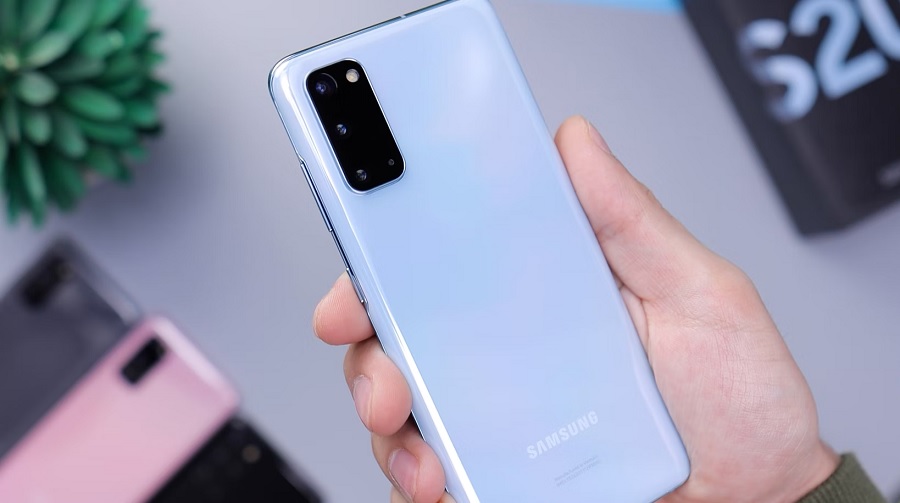Samsung leaks have been circulating online even more over the last week with the imminent release of the Galaxy S22 series. But if tech fans need another indication that new flagship products from Samsung will be released soon, an updated list of Netflix-support chips, which recently added Exynos 2200, might help.
On the Netflix support page, the company lists the Android devices that can stream content in high-definition (HD). There is also a list of “compatible chipsets” that Netflix says should allow devices it powers to stream content in HD. It includes a few models from Huawei’s HiSilicon Kirin and Unisoc, as well as more chipsets manufactured by MediaTek and Qualcomm.
Currently, the chipsets that support Netflix HD streaming include just three Exynos models. But GSMArena noted that one of them was only recently added -- Exynos 2200.
The addition of Exynos 2200 to the list should not be surprising. But it is also a good reminder (and further confirmation) that Samsung’s next mobile chipset for its flagship smartphones is launching soon.
Samsung will host its next Unpacked event on Wednesday, Feb. 9, where the Galaxy S22 will be unveiled. The company’s new flagship phones are expected to be powered by the Exynos 2200 in some regions, and a recent leak may have revealed the list of markets where the chipset will be available.
Leaker Dohyun Kim previously shared a screenshot from an alleged marketing material for the Galaxy S22. The image shows Exynos 2200-powered phones will be available in Europe, the Commonwealth of Independent States (CIS), Southwest Asia, the Middle East, and Africa. Meanwhile, units to be shipped to North America, China, Japan, Southeast Asia, Latin America, and South Korea will use the Snapdragon 8 Gen 1.
Samsung officially announced the Exynos 2200 earlier this month and confirmed that it will be the company’s first chipset to sport an AMD GPU. It uses the RDNA 2 technology, which Samsung says will allow devices to feature “hardware accelerated ray tracing.” The rendering technique has been a common high-end feature in video games, but it was only possible with modern PC graphics cards and current-generation consoles PS5 and Xbox Series X/S.
Photo by Daniel Romero on Unsplash



 Sam Altman Reportedly Explored Funding for Rocket Venture in Potential Challenge to SpaceX
Sam Altman Reportedly Explored Funding for Rocket Venture in Potential Challenge to SpaceX  Intel Boosts Malaysia Operations with Additional RM860 Million Investment
Intel Boosts Malaysia Operations with Additional RM860 Million Investment  Baidu Cuts Jobs as AI Competition and Ad Revenue Slump Intensify
Baidu Cuts Jobs as AI Competition and Ad Revenue Slump Intensify  Australia Moves Forward With Teen Social Media Ban as Platforms Begin Lockouts
Australia Moves Forward With Teen Social Media Ban as Platforms Begin Lockouts  Hikvision Challenges FCC Rule Tightening Restrictions on Chinese Telecom Equipment
Hikvision Challenges FCC Rule Tightening Restrictions on Chinese Telecom Equipment  Firelight Launches as First XRP Staking Platform on Flare, Introduces DeFi Cover Feature
Firelight Launches as First XRP Staking Platform on Flare, Introduces DeFi Cover Feature  AI-Guided Drones Transform Ukraine’s Battlefield Strategy
AI-Guided Drones Transform Ukraine’s Battlefield Strategy  EU Prepares Antitrust Probe Into Meta’s AI Integration on WhatsApp
EU Prepares Antitrust Probe Into Meta’s AI Integration on WhatsApp  Nexperia Urges China Division to Resume Chip Production as Supply Risks Mount
Nexperia Urges China Division to Resume Chip Production as Supply Risks Mount  Wikipedia Pushes for AI Licensing Deals as Jimmy Wales Calls for Fair Compensation
Wikipedia Pushes for AI Licensing Deals as Jimmy Wales Calls for Fair Compensation  TSMC Accuses Former Executive of Leaking Trade Secrets as Taiwan Prosecutors Launch Investigation
TSMC Accuses Former Executive of Leaking Trade Secrets as Taiwan Prosecutors Launch Investigation  Anthropic Reportedly Taps Wilson Sonsini as It Prepares for a Potential 2026 IPO
Anthropic Reportedly Taps Wilson Sonsini as It Prepares for a Potential 2026 IPO  Apple Appoints Amar Subramanya as New Vice President of AI Amid Push to Accelerate Innovation
Apple Appoints Amar Subramanya as New Vice President of AI Amid Push to Accelerate Innovation  Norway’s Wealth Fund Backs Shareholder Push for Microsoft Human-Rights Risk Report
Norway’s Wealth Fund Backs Shareholder Push for Microsoft Human-Rights Risk Report  Quantum Systems Projects Revenue Surge as It Eyes IPO or Private Sale
Quantum Systems Projects Revenue Surge as It Eyes IPO or Private Sale  Apple Leads Singles’ Day Smartphone Sales as iPhone 17 Demand Surges
Apple Leads Singles’ Day Smartphone Sales as iPhone 17 Demand Surges  Samsung Launches Galaxy Z TriFold to Elevate Its Position in the Foldable Smartphone Market
Samsung Launches Galaxy Z TriFold to Elevate Its Position in the Foldable Smartphone Market 































